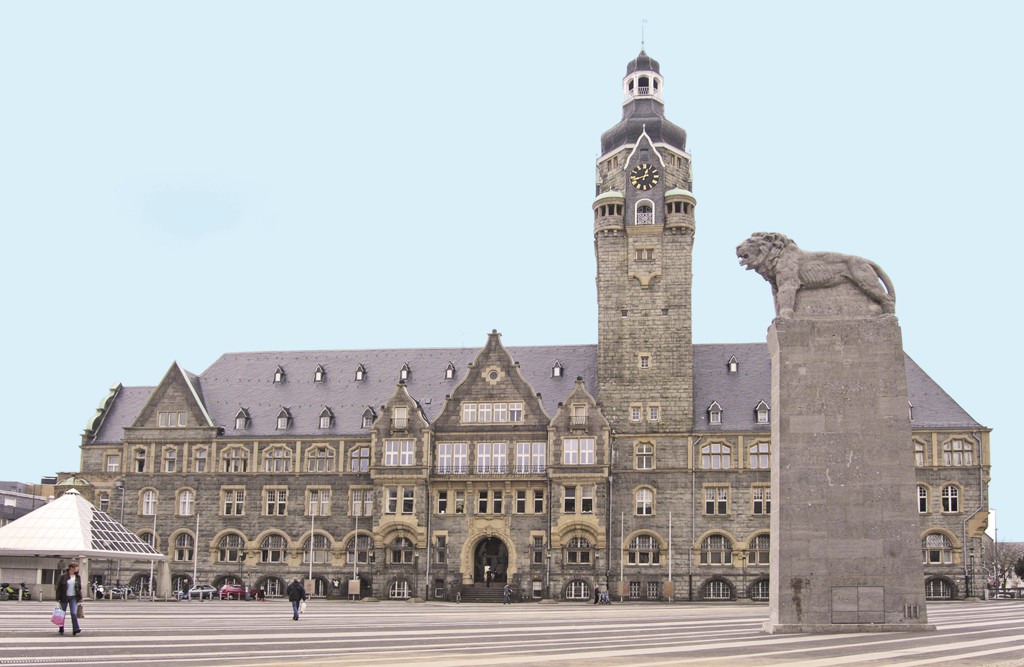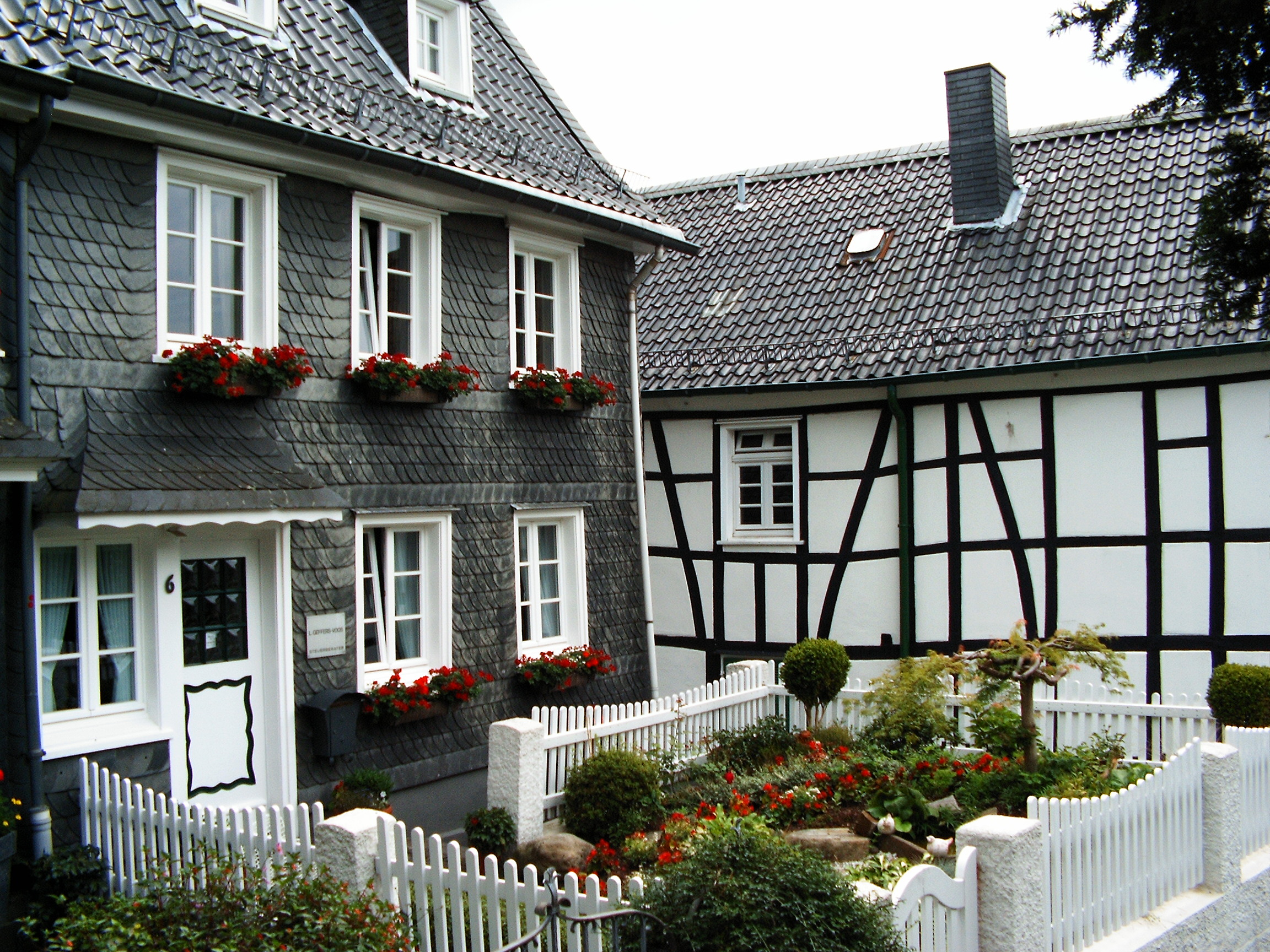|
Remscheid Hauptbahnhof
Remscheid Hauptbahnhof is a railway station in the Bergisch city of Remscheid in the German state of North Rhine-Westphalia. It is located in Willy-Brandt-Platz near central Remscheid and is classified by Deutsche Bahn as a category 5 station. Remscheid and Gevelsberg Hauptbahnhof are the only Hauptbahnhof stations in Germany to be served only by S-Bahn trains. History On 1 September 1868, the Bergisch-Märkische Railway Company () opened the first section of the Rittershausen–Opladen line from Oberbarmen (then called Rittershausen) to Lennep, together with a branch line to Remscheid, giving the city its first rail connection. Remscheid station (now called ''Remscheid Hauptbahnhof'') and its attached buildings were built of timber. A branch line to Hasten was opened on 1 September 1883, and the Lennep–Remscheid line was duplicated up to 1891. Five years later, a branch to Bliedinghausen was added, but has only ever been used for freight. As part of the construction ... [...More Info...] [...Related Items...] OR: [Wikipedia] [Google] [Baidu] |
Remscheid
Remscheid () is a List of cities and towns in Germany, city in North Rhine-Westphalia, Germany. It is, after Wuppertal and Solingen, the third-largest municipality in Bergisches Land, being located on the northern edge of the region, on the south side of the Ruhr area. Remscheid had around 109,000 inhabitants in 2015. At the end of 2019 it had 113,703 inhabitants. Geography Remscheid comprises four boroughs, ''Alt-Remscheid'', ''Remscheid-Süd'', ''Lennep'', and Lüttringhausen. Its highest point is the Brodtberg (378 m). History Remscheid was founded in the 12th century, but remained a small village until the 19th century. Early spellings for the city included ''Remissgeid'' (1217), ''Rymscheyd'' (1351), ''Reymscheyd'' (1487) and ''Rembscheid'' (1639). The economic growth of the entire Rhine-Ruhr region led to an increase of the population of Remscheid. Mechanical engineering and toolmaking were the main industries practised within the town. This is carried on today with the H ... [...More Info...] [...Related Items...] OR: [Wikipedia] [Google] [Baidu] |
Bergisch-Märkische Railway Company
The Bergisch-Markisch Railway Company (german: Bergisch-Märkische Eisenbahn-Gesellschaft, BME), also referred to as the Berg-Mark Railway Company or, more rarely, as the Bergisch-Markische Railway Company, was a German railway company that together with the Cologne-Minden Railway (''Cöln-Mindener Eisenbahn-Gesellschaft'', ''CME'') and the Rhenish Railway Company (''Rheinische Eisenbahn-Gesellschaft'', ''RhE'') was one of the three (nominally) private railway companies that in the mid-19th century built the first railways in the Ruhr and large parts of today's North Rhine-Westphalia. Its name refers to Bergisches Land and the County of Mark. History Foundation The Bergisch-Markisch Railway Company was founded on 18 October 1843 in Elberfeld (Today Wuppertal). Since the Cologne-Minden Railway Company had decided to build its route via Duisburg rather than through the valley of the Wupper river, the Bergisch-Markisch Railway Company (german: Bergisch-Märkische Eisenbahn-Gesellscha ... [...More Info...] [...Related Items...] OR: [Wikipedia] [Google] [Baidu] |
Wuppertal
Wuppertal (; "''Wupper Dale''") is, with a population of approximately 355,000, the seventh-largest city in North Rhine-Westphalia as well as the 17th-largest city of Germany. It was founded in 1929 by the merger of the cities and towns of Elberfeld, Barmen, Ronsdorf, Cronenberg and Vohwinkel, and was initially "Barmen-Elberfeld" before adopting its present name in 1930. It is regarded as the capital and largest city of the Bergisches Land (historically this was Düsseldorf). The city straddles the densely populated banks of the River Wupper, a tributary of the Rhine called ''Wipper'' in its upper course. Wuppertal is located between the Ruhr (Essen) to the north, Düsseldorf to the west, and Cologne to the southwest, and over time has grown together with Solingen, Remscheid and Hagen. The stretching of the city in a long band along the narrow Wupper Valley leads to a spatial impression of Wuppertal being larger than it actually is. The city is known for its steep ... [...More Info...] [...Related Items...] OR: [Wikipedia] [Google] [Baidu] |
Solingen
Solingen (; li, Solich) is a city in North Rhine-Westphalia, Germany. It is located some 25 km east of Düsseldorf along the northern edge of the region called Bergisches Land, south of the Ruhr area, and, with a 2009 population of 161,366, is after Wuppertal the second-largest city in the Bergisches Land. It is a member of the regional authority of the Rhineland. Solingen is called the "City of Blades", since it has long been renowned for the manufacturing of fine swords, knives, scissors and razors made by famous firms such as WKC Stahl- und Metallwarenfabrik, WKC, DOVO Solingen, DOVO, Wüsthof, J. A. Henckels, Zwilling J. A. Henckels, Böker, Güde, Hubertus, Diefenthal, Puma, Clauberg, Eickhorn, Linder, Carl Schmidt Sohn, Dreiturm, Herder, and numerous other manufacturers. In medieval times, the swordsmiths of Solingen designed the town's coat of arms, which continues to the present. In the latter part of the 17th century, a group of swordsmiths from Solingen broke thei ... [...More Info...] [...Related Items...] OR: [Wikipedia] [Google] [Baidu] |
Interlocking
In railway signalling, an interlocking is an arrangement of signal apparatus that prevents conflicting movements through an arrangement of tracks such as junction (rail), junctions or crossings. The signalling appliances and Track (rail transport), tracks are sometimes collectively referred to as an ''interlocking plant''. An interlocking is designed so that it is impossible to display a signal to proceed unless the route to be used is proven safe. Interlocking is a safety measure designed to prevent signals and Railroad switch, points/switches from being changed in an improper sequence. For example interlocking would prevent a signal from being changed to indicate a diverging route, unless the corresponding points/switches had been changed first. In North America, the official railroad definition of interlocking is: "''An arrangement of signals and signal appliances so interconnected that their movements must succeed each other in proper sequence''". Configuration and use A ... [...More Info...] [...Related Items...] OR: [Wikipedia] [Google] [Baidu] |
Wagon-load
In rail freight transportation the terms wagonload or wagonload freight refer to trains made of single wagon consignments of freight. In the US and Canada the term carload refers to a single car of any kind, and manifest train refers to trains made of diverse cars of freight. With competition from road transport rail freight transport is increasingly operated as unit trains, with wagonload less able to compete with road haulage. As of 2012 in Europe wagonload freight represents 30 to 40 percent of freight carried in many countries including France, Italy, Germany, Belgium; in other countries, including the UK and Romania, wagonload freight is a very minor aspect of rail freight transport representing less than 5% of rail freight transport. Overview Wagonload traffic typically consists of individual wagons load with goods at separate locations (goods shed), transferred to marshalling yards where the wagons are sorted by destination, then transported to a destination marshalling ya ... [...More Info...] [...Related Items...] OR: [Wikipedia] [Google] [Baidu] |
Third Reich
Nazi Germany (lit. "National Socialist State"), ' (lit. "Nazi State") for short; also ' (lit. "National Socialist Germany") (officially known as the German Reich from 1933 until 1943, and the Greater German Reich from 1943 to 1945) was the German state between 1933 and 1945, when Adolf Hitler and the Nazi Party controlled the country, transforming it into a dictatorship. Under Hitler's rule, Germany quickly became a totalitarian state where nearly all aspects of life were controlled by the government. The Third Reich, meaning "Third Realm" or "Third Empire", alluded to the Nazi claim that Nazi Germany was the successor to the earlier Holy Roman Empire (800–1806) and German Empire (1871–1918). The Third Reich, which Hitler and the Nazis referred to as the Thousand-Year Reich, ended in May 1945 after just 12 years when the Allies defeated Germany, ending World War II in Europe. On 30 January 1933, Hitler was appointed chancellor of Germany, the head of government, ... [...More Info...] [...Related Items...] OR: [Wikipedia] [Google] [Baidu] |
Wuppertal Hauptbahnhof
Wuppertal Hauptbahnhof (German for Wuppertal main rail station) is a railway station in the city of Wuppertal, just south of the Ruhr Area, in the German state of North Rhine-Westphalia. It is on the line between Düsseldorf/Cologne and Dortmund. The 1848 reception building is one of the oldest of its kind. The station was originally Elberfeld station and has been renamed several times since. Since 1992, it has been called ''Wuppertal Hauptbahnhof''. Wuppertal Hauptbahnhof is also the site of lost luggage operations for Deutsche Bahn. History On 3 September 1841, a few years after the opening of the first railway in Germany, the Dusseldorf-Elberfeld Railway Company (German: ''Düsseldorf-Elberfelder Eisenbahn-Gesellschaft'', DEE) began operation of the Düsseldorf–Elberfeld line from its Düsseldorf station to its Elberfeld station (now Wuppertal-Steinbeck station). It was the first steam-worked railway line in Western Germany and Prussia. The Bergisch-Märkische Railway ... [...More Info...] [...Related Items...] OR: [Wikipedia] [Google] [Baidu] |
Opladen Station
Opladen station is in the suburb of Opladen of the city of Leverkusen in the German state of North Rhine-Westphalia. It is on the Gruiten–Köln-Deutz railway, which was opened on 25 September 1867 from Ohligs by the Bergisch-Märkische Railway Company (BME). It was extended to Mülheim BME station on 8 April 1868. The station was also opened on 25 August 1867. The original station building was demolished in 1965 and replaced by a building built in 1968. This building has been demolished in 2016. It is classified by Deutsche Bahn as a category 4 station. The station is served hourly by Regional-Express line RE 7 ''Rhein-Münsterland-Express'' between Krefeld and Münster via Cologne and Hamm. It is also served every 30 minutes between 5am to 8pm by Regionalbahn RB 48 ''Rhein-Wupper-Bahn'', stopping at all stations between Wuppertal-Oberbarmen and Cologne Cologne ( ; german: Köln ; ksh, Kölle ) is the largest city of the German western state of North Rhine-Westph ... [...More Info...] [...Related Items...] OR: [Wikipedia] [Google] [Baidu] |
Müngsten Bridge
Müngsten Bridge is the highest railway bridge in Germany. . Retrieved 15 May 2014. The bridge is high and spans the valley of the river , connecting the cities of and . This stretch is part of the Wuppertal-Oberbarmen–Solingen rail ...
[...More Info...] [...Related Items...] OR: [Wikipedia] [Google] [Baidu] |






.jpg)
